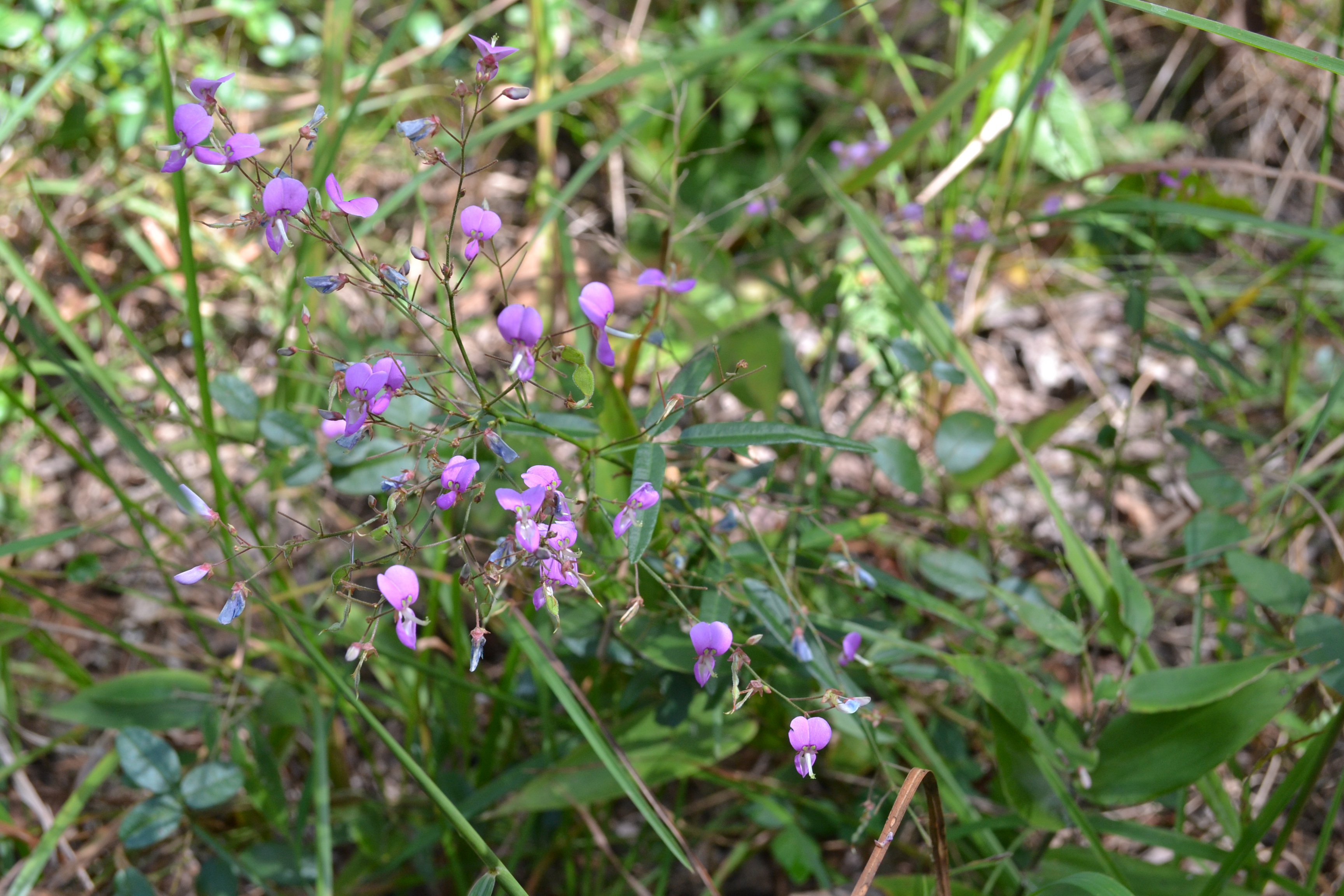Difference between revisions of "Desmodium paniculatum"
(→Ecology) |
(→Seed dispersal) |
||
| Line 38: | Line 38: | ||
===Seed dispersal=== | ===Seed dispersal=== | ||
| − | Fruit coats are covered with sticky trichomes that allow the seeds to stick to passing organisms and be carried off until they eventually fall off.<ref name="Wulff 1986a"/> | + | Fruit coats are covered with sticky trichomes that allow the seeds to stick to passing organisms and be carried off until they eventually fall off.<ref name="Wulff 1986a"/><ref name="Isely D. (1953). ''Desmodium paniculatum'' (L.) DC. and ''D. viridiflorum'' (L.) DC. The American Midland Naturalist. 49(3):920-933.</ref> |
===Seed bank and germination=== | ===Seed bank and germination=== | ||
Revision as of 14:02, 12 December 2017
| Desmodium paniculatum | |
|---|---|

| |
| Photo by Kevin Robertson | |
| Scientific classification | |
| Kingdom: | Plantae |
| Division: | Magnoliophyta - Flowering plants |
| Class: | Magnoliopsida - Dicots |
| Order: | Fabales |
| Family: | Fabaceae |
| Genus: | Desmodium |
| Species: | D. paniculatum |
| Binomial name | |
| Desmodium paniculatum L. | |

| |
| Natural range of Desmodium paniculatum from USDA NRCS Plants Database. | |
Common Name(s): panicledleaf ticktrefoil;[1] panicled tick trefoil[2]
Contents
Taxonomic Notes
Varieties: D. paniculatum var. paniculatum; D. paniculatum var. epetiolatum[1][3]
Description
Desmodium paniculatum is a facultative upland dioecious perennial forb/herb.[1] It uses low amounts of water, inhabits dry clay or loamy soils, and prefers partial shade.[2] In fact, D. paniculatum has shown to contain 24% and 9% more dry weight in 50% and 80% shade, respectively, than in full sun.[4]
Distribution
Desmodium paniculatum can be found from Texas to Nebraska, eastward to Florida, the Carolina's, and Pennsylvania, and northward into Michigan, New York, Maine and parts of eastern Canada.[1]
Ecology
Habitat
D. paniculatum is found in pine savannas, flatwoods, bogs, fields, woodland borders, and disturbed areas.[3]
Phenology
D. paniculatum flowers between July and November, peaking in September[3][5] with conspicuous purple colored flowers.[2] Flowering can be delayed and seed production reduced when grown in high densities where competition is prevalent.[6] Seed weights vary by a factor of about 4 due to difference in several interacting variables including nutrient intake, water availability, photoperiod, temperature, and grazing impact.[7]
Seed dispersal
Fruit coats are covered with sticky trichomes that allow the seeds to stick to passing organisms and be carried off until they eventually fall off.[7]Cite error: Closing </ref> missing for <ref> tag
Use by animals
D. paniculatum produces seeds which attract birds and small rodents, including upland game birds such as bobwhite quail and wild turkey and rodents such as the white-footed mouse and deer mouse. It also serves as a source of food for cottontail rabbits, livestock, and other hoofed mammalian herbivores including white tailed deer.[8]
Conservation and Management
Cultivation and restoration
Photo Gallery
References and notes
- ↑ 1.0 1.1 1.2 1.3 USDA, NRCS. (2016). The PLANTS Database (http://plants.usda.gov, 30 November 2017). National Plant Data Team, Greensboro, NC 27401-4901 USA.
- ↑ 2.0 2.1 2.2 Plant database: Rubus cunifolius. (12 December 2017).Lady Bird Johnson Wildflower Center. URL: https://www.wildflower.org/plants/result.php?id_plant=DEPA6
- ↑ 3.0 3.1 3.2 Weakley A. S.(2015). Flora of the Southern and Mid-Atlantic States. Chapel Hill, NC: University of North Carolina Herbarium.
- ↑ Lin C. H., McGraw R. L., George M. F., and Garrett H. E. (1999). Shade effects on forage crops with potential in temperate agroforestry practices.
- ↑ Nelson G. (11 December 2017) PanFlora. Retrieved from gilnelson.com/PanFlora/
- ↑ Wulff R. D. (1986). Seed size variation in Desmodium paniculatum: III. Effects on reproductive yield and competitive ability. Journal of Ecology 74(1):115-121.
- ↑ 7.0 7.1 Wulff R. D. (1986). Seed size variation in Desmodium paniculatum: I. Factors affecting seed size. Journal of Ecology 74(1):87-97.
- ↑ Leif J. and Belt S. (2013). Plant Guide for Panicledleaf ticktrefoil (Desmodium paniculatum), USDA-Natural Resources Conservation Service, Rose Lake Plant Materials Center, East Lansing, Michigan, 48823 and USDA-Natural Resources Conservation Service Norman Berg National Plant Materials Center, Beltsville, Maryland, 20705.